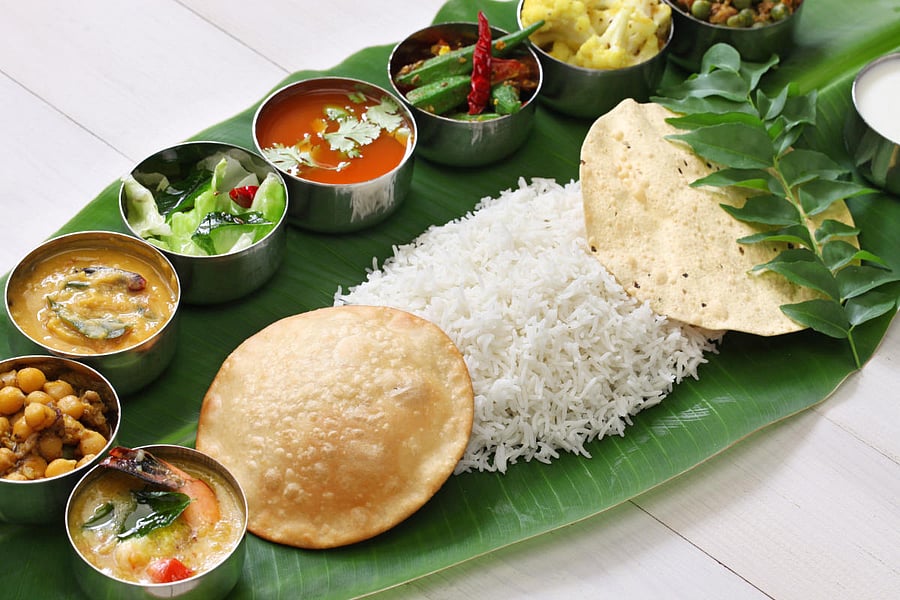
The tidy trappings of meal to be partaken with knives and forks are a contrast to the gay spread of a south Indian wedding meal on a plantain leaf.
The mountains of rice, rivers of rasam and ponds of payasa may seem intractable to one unfamiliar with the lay of the land — er — leaf, but in what looks like pure chaos, lies a system — right from the orientation of the leaf to the spots the items occupy on the leaf. The wide open spaces on the leaf are quickly covered with servings as the cook and his assistants, with dhoties or towels wrapped around their waists, deposit dishes in a defined sequence on precise spots on the leaf. Guests, as a custom don’t dive into the meal till all the items take their designated spots on the leaf, though a few impetuous ones pinch a nibble or two while the elders are looking the other way.
On receiving the start signal, the guests, a picture of self-restraint moments ago, get down to business, demolishing and devouring the spread with gusto, with none of the fuss and formality of knives or forks. Amid slurps and burps, they work with their deft fingers to navigate what appears to be a complicated catacomb of items of every colour, shape and texture, rarely raising their heads, except to check what’s following next. That’s because, with a south Indian plantain leaf meal, it’s not just a case of what you see is what you get. The vacant spots on the leaf are replenished and replaced by a new set of bites from the kitchen, much to the despair of the diner.
Just as his tongue and tummy try to resolve the conflict, his words and gestures to the cook dangling the delicacy before him seem to contradict each other. The experienced cook, however, knows too well that he means “Yes!” and drops the dainty on the leaf, for a happy end to the difficulty.
The south Indian plantain meal, apparently, accounts for such indulgent diners. According to nutritionist and food expert K C Raghu, the meal is meant to provide a balance of taste and nutrition. “Traditionally, such meals are governed by Shad Rasa or six tastes,” says Raghu. According to Ayurvedic tradition, there are six basic tastes. They are, Madhura – Sweet; Amala – Sour; Lavana – Salt; Katu – Pungent; Tikta – Bitter and Kashaya – Astringent. “For instance, if the diner is feeling fulsome after an extra block of Mysore pak, the sour, pungent lime pickle at the corner of the leaf quickly restores the balance,” says Raghu.
(A fortnightly look at some food fetishes and secrets from a city of gastronomes and beyond.)